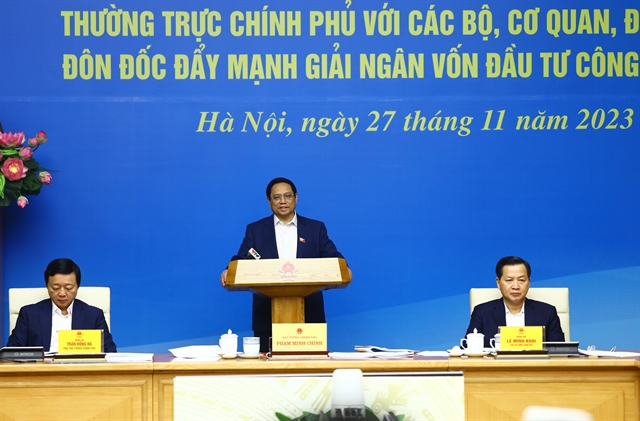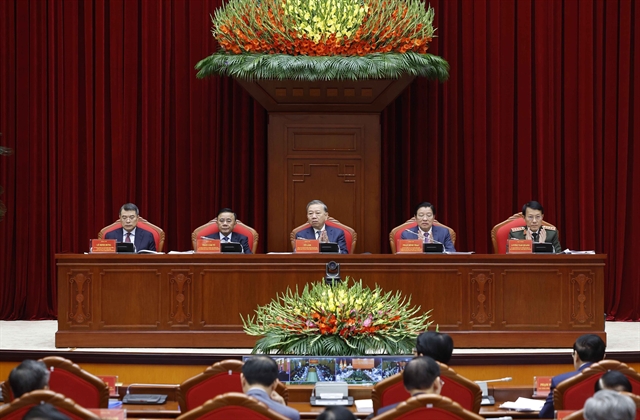 Economy
Economy


|
| Prime Minister Phạm Minh Chính (centre) at the government meeting on public investment disbursement on Monday. —VNA/VNS Photo Lâm Khánh |
HÀ NỘI — The disbursement rate of public investment must reach at least 95 per cent by the end of 2023, government leaders said at a meeting on Monday.
Addressing the event, Deputy Prime Minister Lê Minh Khái said: “Public investment creates the infrastructural foundation to address bottlenecks and create momentum and new space for growth, while also improving connections and competitiveness at the local and national levels.
“Public investment also leads the way for private funding and the total capital for stronger business operations, creating jobs and livelihoods, promoting growth and facilitating economic recovery and development.”
"In the context where other growth drivers such as consumption, exports and investment are under difficulty due to the current global situation, public investment is even more significant," he said.
In 2023, there were eight resolutions and one directive issued by the Government and the Prime Minister on public investment disbursement.
A national meeting on the matter was also held in February this year by the Government to accelerate public investment.
Working groups have also been established to work with localities in addressing the challenges on the matter.
A report from the Ministry of Planning and Investment (MPI) presented at the meeting said that as of October 2023, more than VNĐ389 trillion (US$16 billion) had been disbursed nationwide, reaching 55.02 per cent of the plan.
However, shortcomings persist and several ministries, central departments and localities havd a lower disbursement rate than the national average, at only 36.1 per cent of the plan.
The report also detailed challenges in public investment disbursement this year, such as those related to policies and frameworks, implementation and specific issues of the 2023 plan, which outlined a substantial public investment fund 23 per cent larger than that of 2022 (an increase of VNĐ130 trillion or $5.36 billion).
Implementation and operational issues were some of the main reasons for the disbursement rate falling short of expectations, which explained why several units and localities have better disbursement rates despite all stakeholders being in the same challenging situation.
The MPI report said that there was a large amount of public investment not yet disbursed, VNĐ247 trillion ($10.19 billion), while there would be only 35 days until the end of the year.
Therefore, great determination and comprehensive actions are required to reach the disbursement goal of 95 per cent, the report underlined.
Prime Minister Phạm Minh Chính said: “Ministries, departments and localities must amp up supervision and monitoring to address bottlenecks and improve discipline in public investment.”
He also emphasised that it was a must to accelerate public investment disbursement while also ensuring project quality and preventing corruption.
Public investment, the socio-economic recovery and development programme, and the three national target programmes were the priorities, he said, especially in regard to key projects such as expressways, and projects concerning multiple provinces or expected to have strong impacts.
PM Chính required maintaining the government working group mechanisms with localities, while also emphasising the role of local-level leaders in moving forward important projects.
The government leader also called for stronger supervision of contractors and advisors to accelerate progress, in addition to addressing less competent public employees.
Ministries, departments and localities must review project processes and enhance administrative reforms and digital transformation, especially in evaluation, capital allocation, expenditure control and post-project appraisal. — VNS




